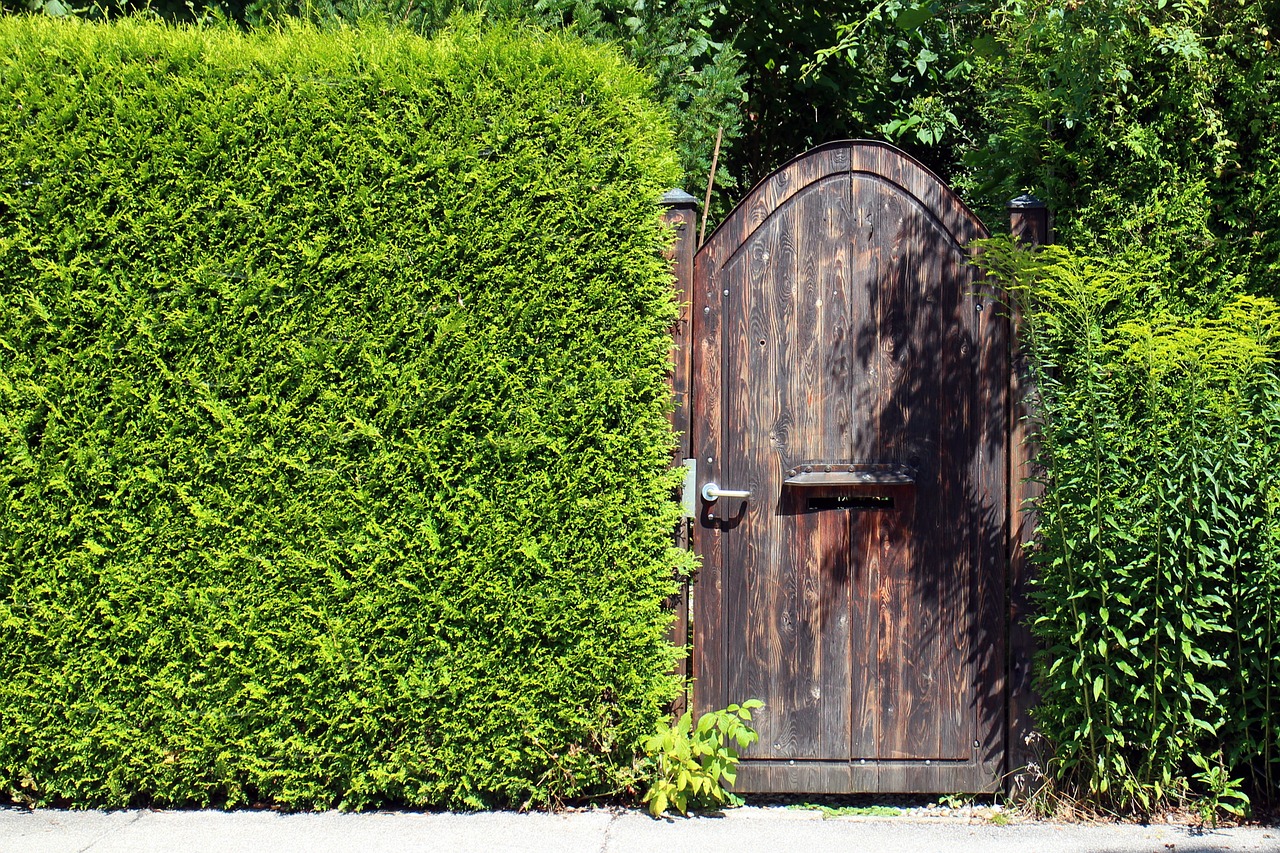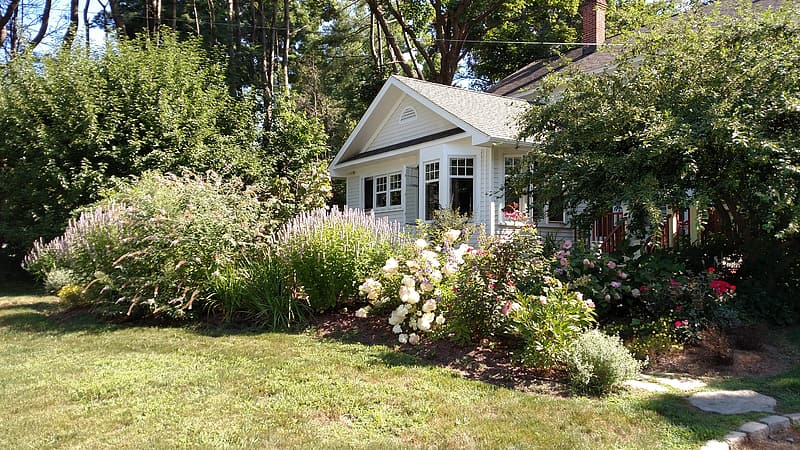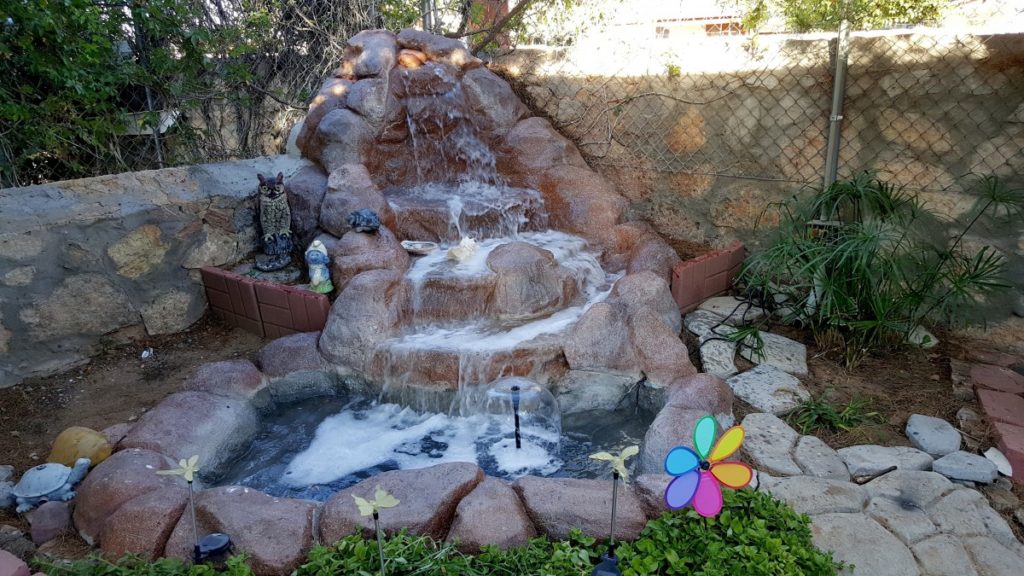
Landscaping serves different purposes for property owners. Strategically selected features can provide beauty, privacy, and protection. If done right, they can also help you block out noise. While you can’t cut all the noise coming from busy roads or densely populated neighborhoods, landscaping can help.
Noise-Blocking Plants

Photo Credit: Pixabay
Did you know vegetation can help block noise? It does this by absorbing and scattering sound waves. Plants are also more visually pleasing than other noise blocking barriers. You can get the best of both worlds by planting tree screens in front of a sound-blocking barrier such as a wall or fence.
You can also create a wall of sound blocking shrubs closer to your house. You want to be careful not to plant large trees to close to the house, where limbs could snap and break windows or power lines.
Diversify
The key to a healthy tree or shrub screen is to use a variety of plants, no matter what purpose your screen will serve. The University of Maryland Extension office suggests doing this to give your screen a better defense against pests, disease, and climate change. “Climate change is causing more extreme weather fluctuations in Maryland. In an extremely rainy year, for example, plants that are intolerant of wet soil (e.g., yews) may not survive. If you have a screen consisting of just one kind of plant and a problem occurs, you risk losing the investment you made in an entire row of plants. A variety of different plant species provides some assurance that if one type of plant develops problems, you will not lose the whole row to the same issue.”
The extension suggests that if you have sufficient space between you and the noise source, install layers of plantings. The successive layers will each help filter out a bit of the noise.
Size and Texture
Plants that work — assuming you have a sunny location and no deer — include Western arborvitae, hollies, Southern and sweetbay magnolias, and cedars.
Use evergreen trees and shrubs to get the noise muffling effect year-round. Your screen will be easier to maintain if you choose native plants. These plants are accustomed to our soil conditions and climate. They also need less water, fertilizer, and care than non-native species.
Start your screen by planting taller trees in the back. Plant them far enough apart to give them room to grow, but close enough so the greenery will be dense at maturity. Go with shorter trees, shrubs, or ornamental grasses in the middle and front. For these layers, you’ll want plants with foliage that goes all the way to the ground. Consider American holly or boxwoods for a low-maintenance, evergreen hedge. Insider tip: Place plants needing more care toward the front for easy access.
Fences
Wooden fences with gaps won’t do much to block noise. If you’re in a loud area or are next to a road with a lot of traffic, you’re going to want something more effective. Consider brick or stone, modular fencing, or even an acoustic fence.
If you do choose fencing to block noise, be sure you’re familiar with fencing restrictions. In Washington, D.C., for example, front yard fences must be open, not solid. They also must be at least 3 feet tall and no taller than 3 feet 6 inches. These restrictions date back to the 1790s when city planners were focusing on aesthetics. In some neighborhoods, you don’t own the lawn in front of your home. Do your research before building any fence or structure. You could also consider hiring a professional landscaper or installer.
Water Features

Photo Credit: Unsplash
In addition to muffling traffic or neighborhood noise, you can try putting up a distraction, such as a water feature. Moving water is calming and can add a Zen-like quality to your yard or garden. Fountains, waterfalls, or any form of moving water through a recirculating pump will do the trick.
Wind Chimes
Wind chimes also fall in the “cover up the noise” category. Be careful when choosing your wind chimes. What you may think of as a beautiful sound may drive your neighbors crazy! They can also be irritating at night or when the wind is blowing for long periods of time. Find models with a lower resonance or with the option to remove clappers if needed. Resist the urge to include multiple wind chimes in your landscaping. Instead of muffling noise pollution, you may be adding to it.
When you’re ready to add landscaping to your property, call a local landscape expert to help transform your yard and minimize the noise.
Main Image Credit: Pixabay